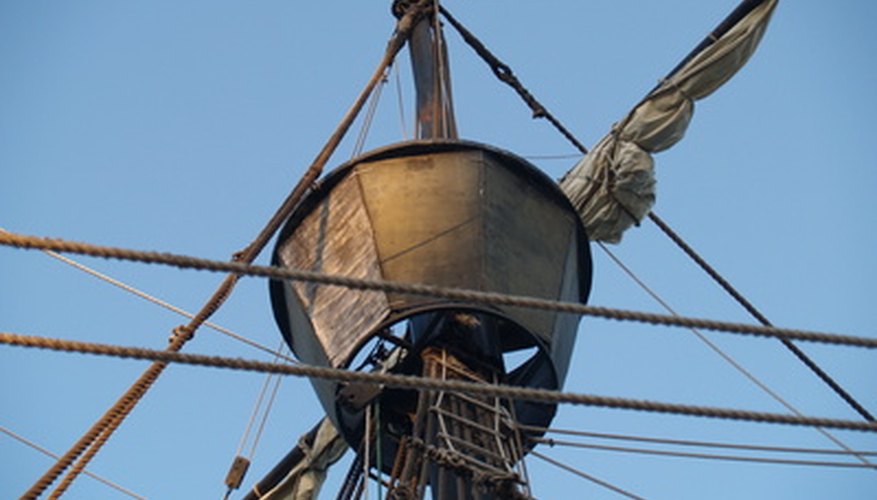A caravel is a type of small sailing ship used in the 15th century by Portuguese sailors--most famously by Christopher Columbus, who sailed to America in the caravel Santa Maria. Because of the ship's simple shape and construction, a caravel is one of the easiest sailing vessels to use as the basis for a paper model. A paper model caravel can be built in only a couple hours using scissors, glue and paper.
Obtain a pattern for making a paper caravel. See reference 1 below for a link to one free online pattern. Others may be available to you elsewhere on the Internet or in books. If you have a particularly creative streak, design your own pattern, with separate pieces for the hull, masts, decks and sails.
- A caravel is a type of small sailing ship used in the 15th century by Portuguese sailors--most famously by Christopher Columbus, who sailed to America in the caravel Santa Maria.
- If you have a particularly creative streak, design your own pattern, with separate pieces for the hull, masts, decks and sails.
Cut out your pattern, leaving tabs along the edge of each piece to facilitate gluing. If you've made you own pattern, improvise, but pre-made plans work best when cut according to the directions.
Fold and glue the caravel. Begin with the hull, folding up the sides and gluing the front tabs to form the tapering bow. Glue the stern piece onto the back of the hull, and add the rudder. Fold the deck to reflect the raised fore- and quarterdecks, cutting holes for the masts, and glue it to the top of the hull. Add the forecastle to complete the caravel's body.
- Cut out your pattern, leaving tabs along the edge of each piece to facilitate gluing.
- Fold the deck to reflect the raised fore- and quarterdecks, cutting holes for the masts, and glue it to the top of the hull.
Construct the masts and rigging. Most patterns will require you to fold the masts repeatedly into themselves, to make the paper thicker. Score along the lines before folding. This will make it easier to perform the series of tiny folds. Insert the masts into the holes in the deck, pushing down until they touch the bottom of the hull. Glue the yardarms to the masts and bend the sails to look as if they are filled with wind.
- Construct the masts and rigging.
- Glue the yardarms to the masts and bend the sails to look as if they are filled with wind.
Add any final pieces included in your pattern. These will vary depending on the pattern used--potentially including the crow's nest, flags or deck railings. Finish the model by optionally adding string for rigging and colouring any exposed tabs with a marker.
